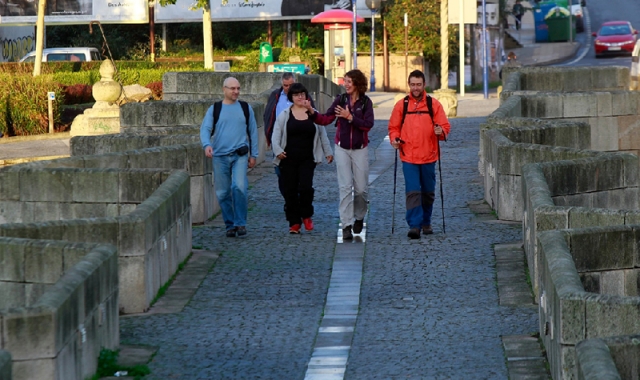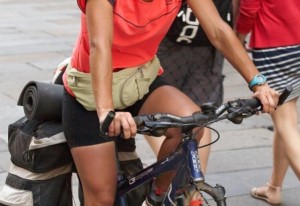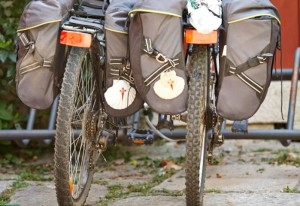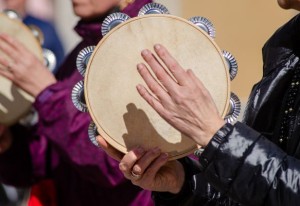The English Way is a route that goes from Ferrol to Santiago de Compostela. There are 120 kilometers which pass through it, divided into 6 stages full of history, nature and tranquility. It is a perfect path for all those pilgrims who want to walk a short and quiet itinerary.
Next, we will discover the history and the stages that run through the English Way. Let’s go there!
History of the English Way
The name Camino Inglés has its origin in the Middle Ages, when British sailors began to take an interest in it. These pilgrims landed on the coasts of A Coruña to start their pilgrimage to Santiago de Compostela. Some left from Ferrol and others from A Coruña and joined in Abegondo to continue towards the Cathedral.
The tour of the English Way
The route of the English Way is increasingly popular due to its pleasant landscape, its good signage and that it can be covered in a few days.
From Ferrol to Santiago de Compostela 120 kilometers pass distributed in 6 stages, but it’s possible to make the way from A Coruña (also known as Camino do Faro). From A Coruña it’s shorter —73 km— than the one from Ferrol —112.5 km—. Both, full of attractions and history, converge halfway, in the town of Bruma, where they continue together the last 40 km to Compostela.
The different stages are marked with yellow arrows and with the classic milestones, which are in places of great visibility, so it is practically impossible for you to deviate from the route.
Stages of the English Way
Stage 1. Ferrol – Neda (15.4 km)
We will depart from Ferrol, a city strategically located at the northern end of the peninsula that has historically been linked to the sea and its activities, specifically the naval one.
In it, you will travel back in time and you can visit the Church of San Francisco, the arsenal also from the s. XVIII or the Hospital de la Caridad, today Torrente Ballester Cultural Center, built in 1780 to help the sick, poor and pilgrims.
Stage 2. Neda- Pontedeume (12.9 km)
In stage two we will leave the Ferrol estuary for the Ares estuary. It is a fairly simple stage in which you can find the odd drop of no more than 140 meters.
Upon reaching Cabañas you will be able to cross the medieval bridge built by Fernán Pérez de Andrade in the 14th century and the legendary Andrade tower.
Stage 3. Pontedeume – Betanzos (20.2 km)
This stage is a bit more complicated than the previous ones. In it we will find quite steep and possibly muddy trails in times of rain.
The difficulty of this stage is worth it when walking through its forests and medieval villages.
Stage 4. Betanzos – Hospital de Bruma (27.8 km)
When you arrive in Betanzos, you will find a town surrounded by old walls, declared a historic-artistic complex along with the rest of the historic center. There are numerous monuments that you can visit, among which the Pazo de Bendaña stands out.
At this stage we will find more unevenness and therefore it may cost you a little more. In addition, you will not find any place where you can buy food or drink, since you will travel many kilometers in the company of nature, so I advise you to go prepared.
Stage 5. Hospital de Bruma – Sigüeiro (24 Km)
In Bruma you can visit the Chapel of San Lourenzo from the 16th century, it is a modest masonry building located in an environment directly linked to the Hospital de Bruma, where this stage begins.
Unlike the previous stage, on your way to Sigüeiro you will find a lot of establishments where you can buy food and rest.
At this stage you will begin to meet more pilgrims, a sign that you are about to arrive at the Cathedral of Santiago.
Stage 6. Sigüeiro – Santiago de Compostela (16 km)
Already in the last stage of the English Way, you will cross the so-called Enchanted Forest, a very famous forest and appreciated by pilgrims.
Once in Santiago, you will be able to enjoy its impressive historic center before reaching the long-awaited destination, the Cathedral of Santiago.
Remember that in our social networks we will keep you up to date with all the news that arise, follow us on Facebook or Instagram!
In addition, we encourage you to share with us your experience traveling the Camino de Santiago on these social networks by tagging us or including the hashtag #alberguesdelcamino in your publication. We look forward to your photos!















